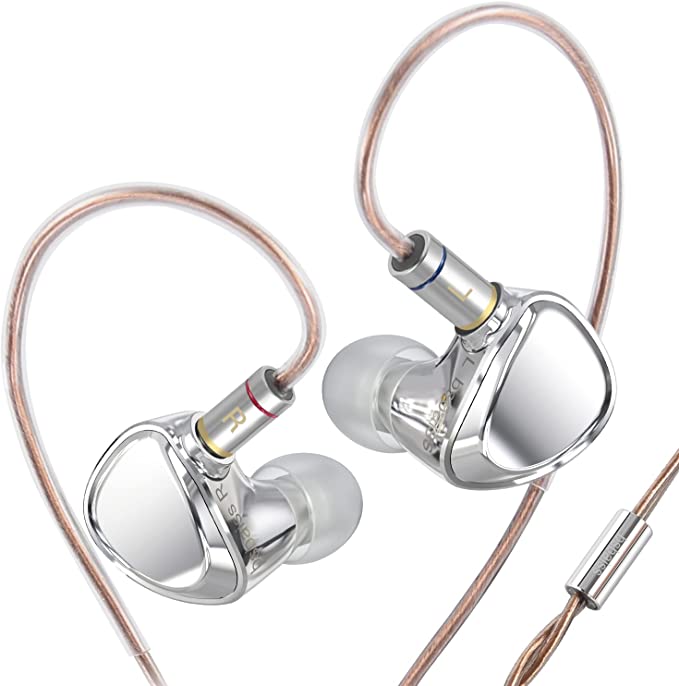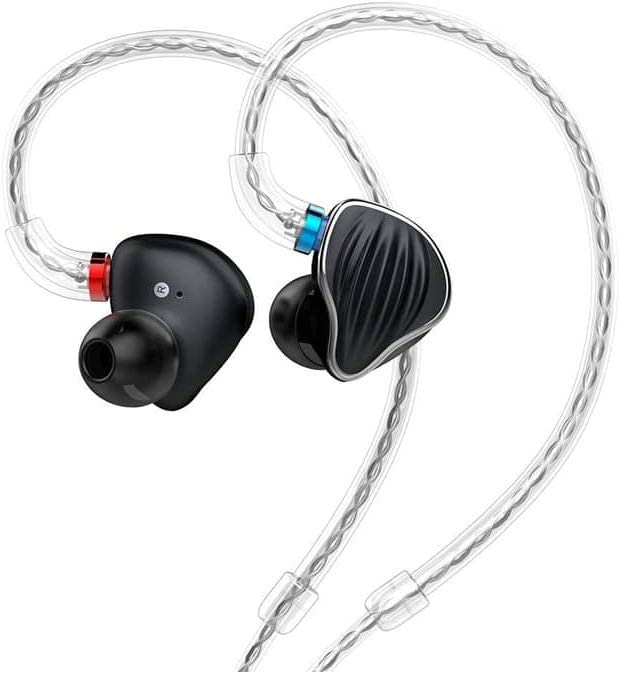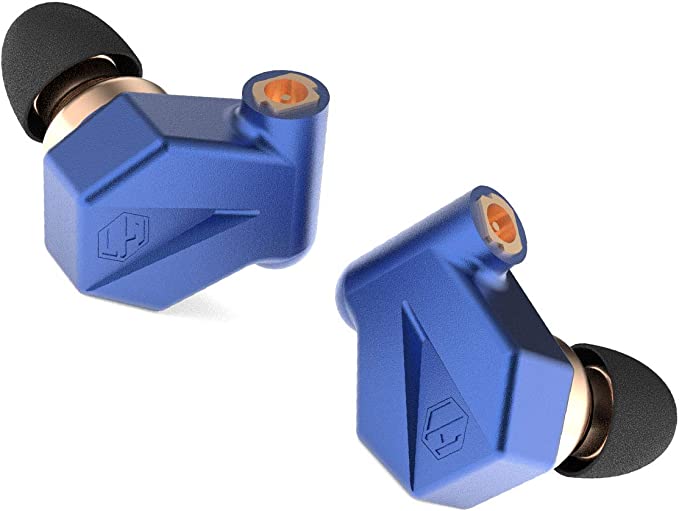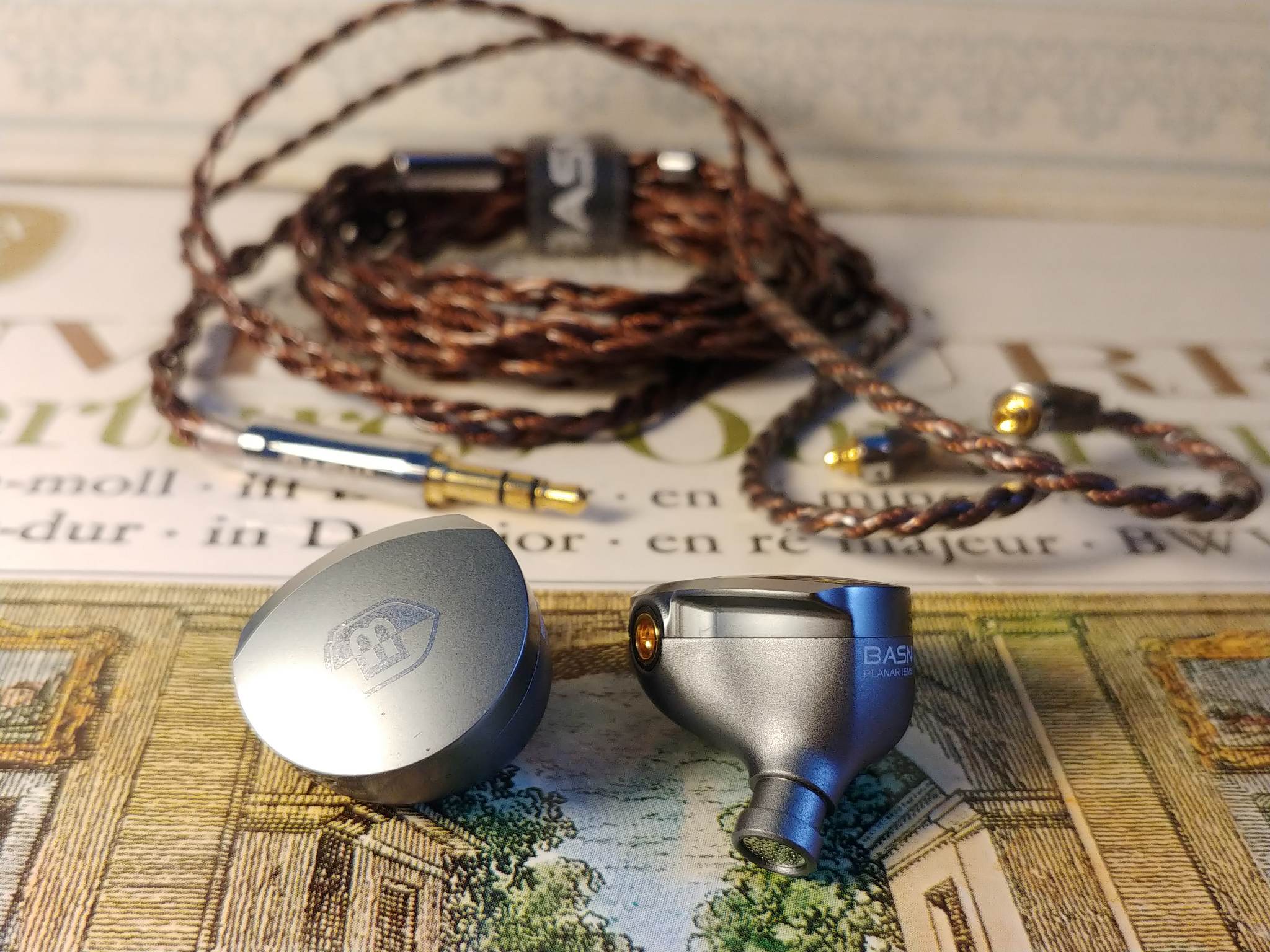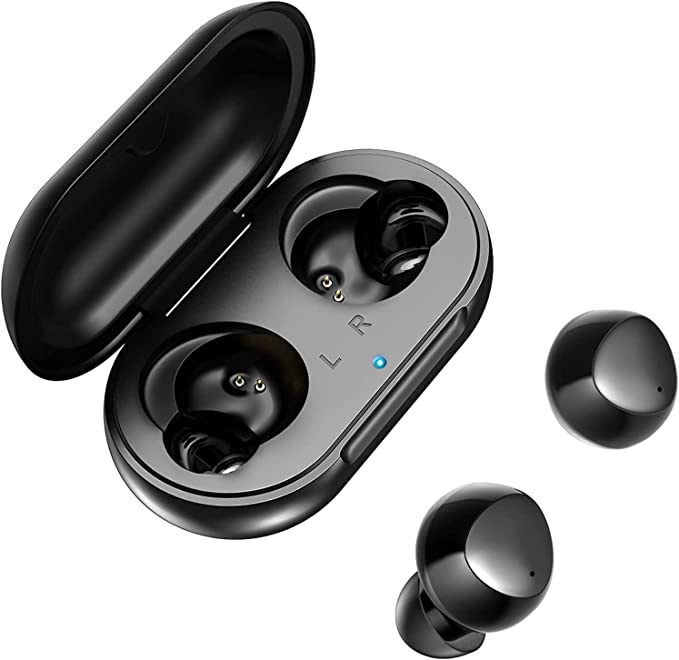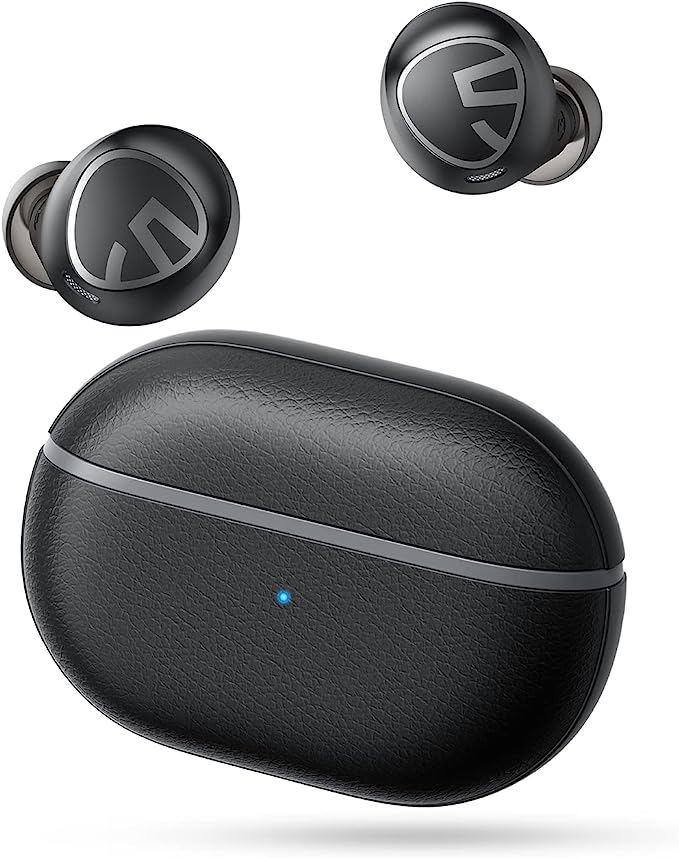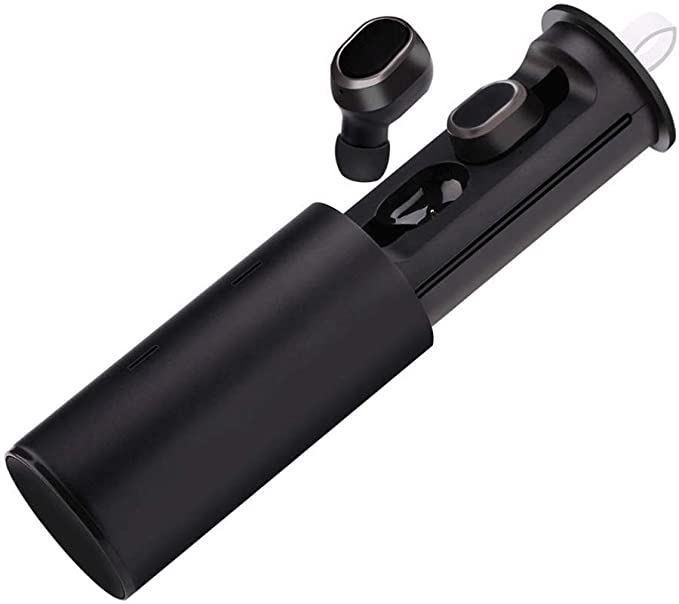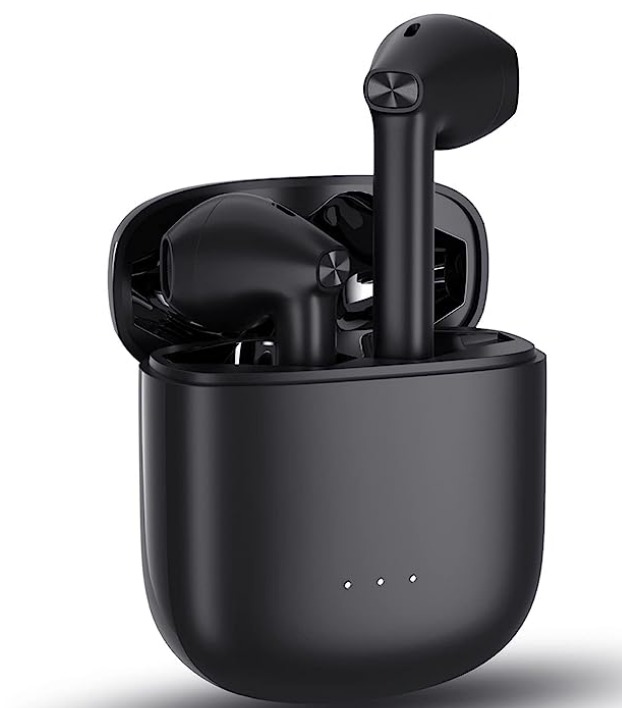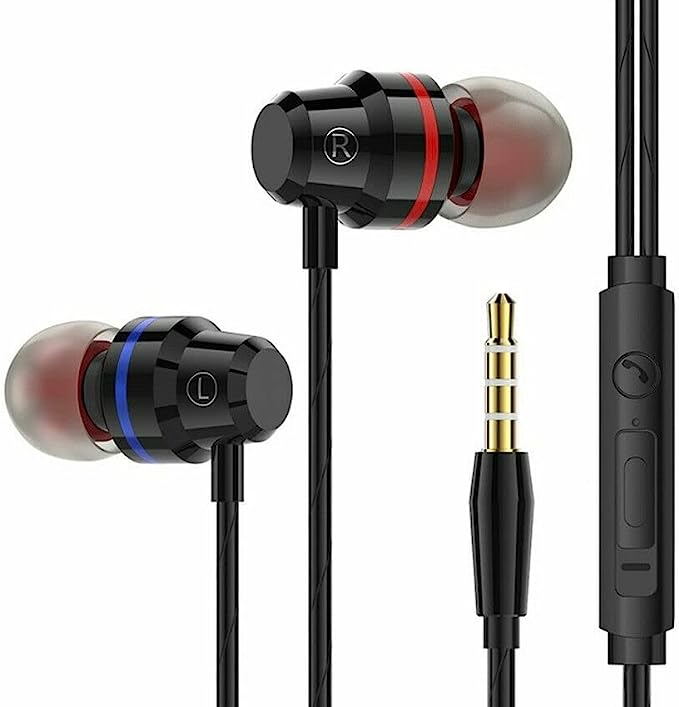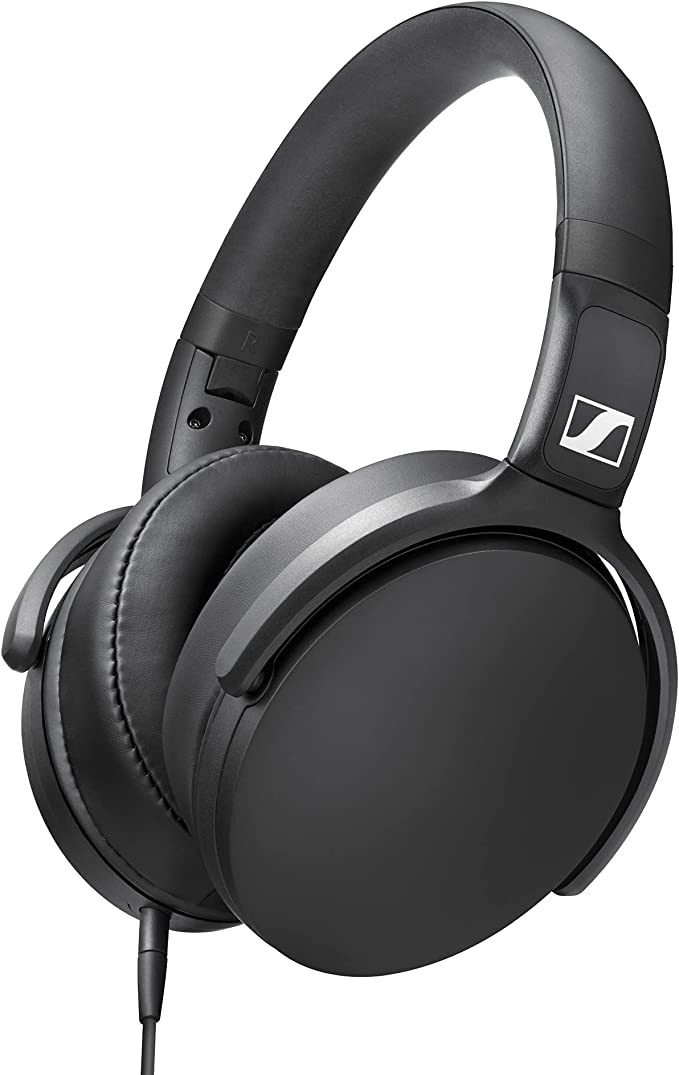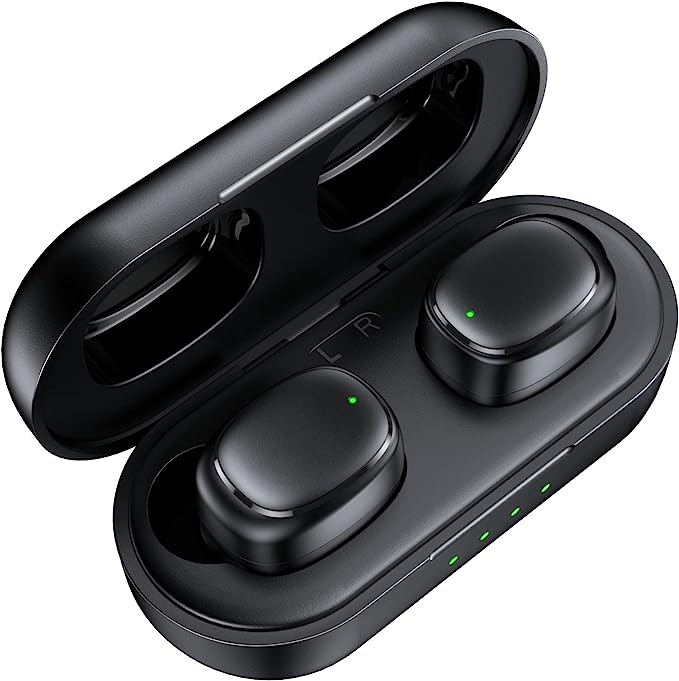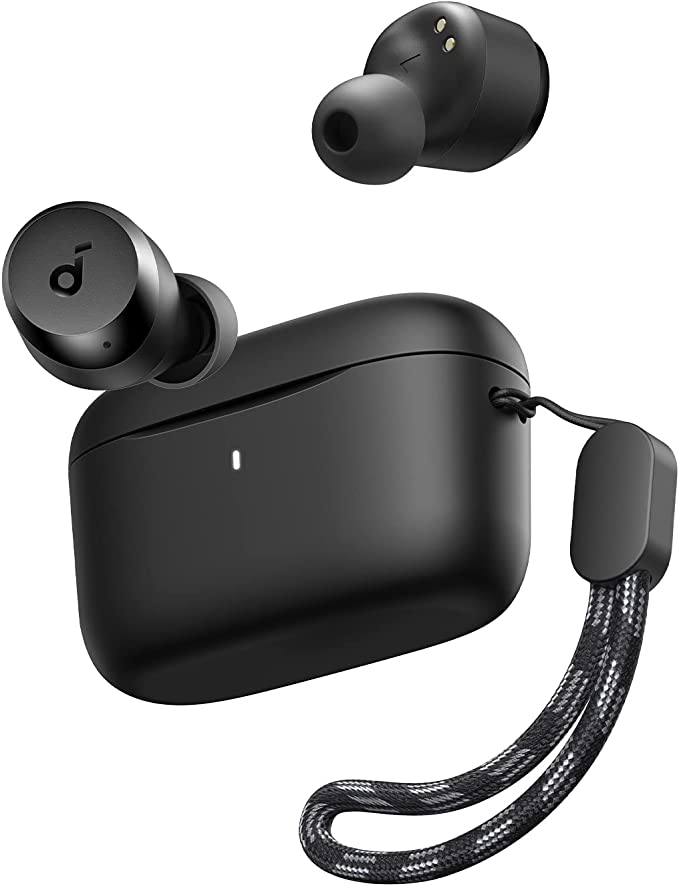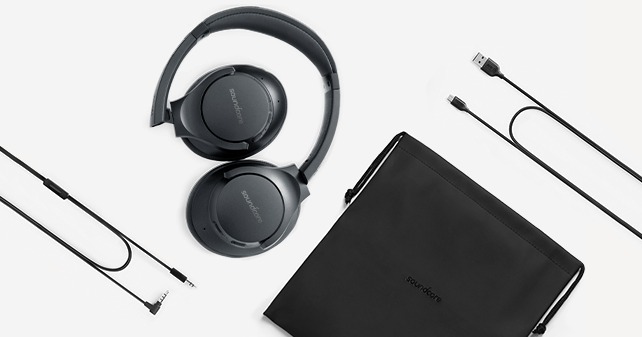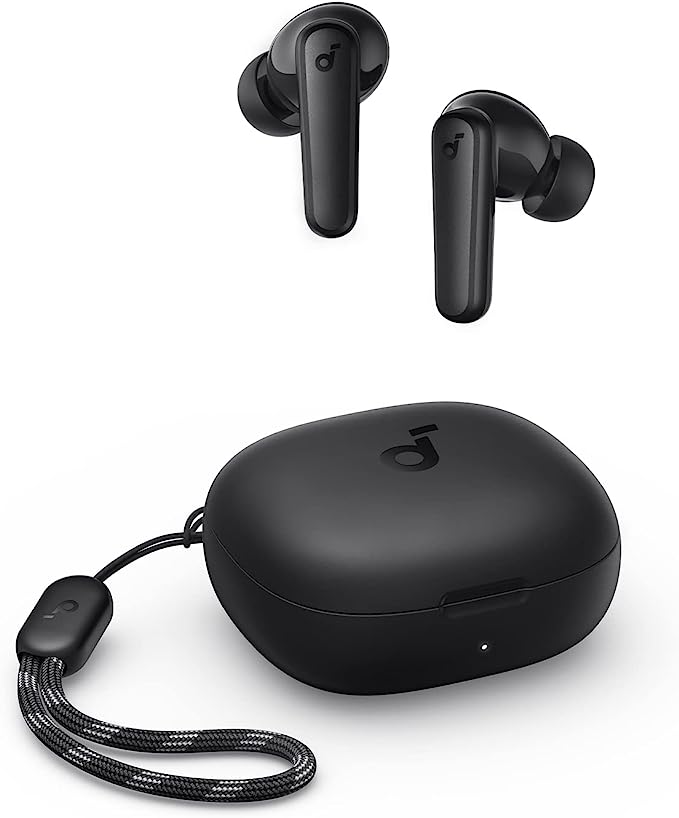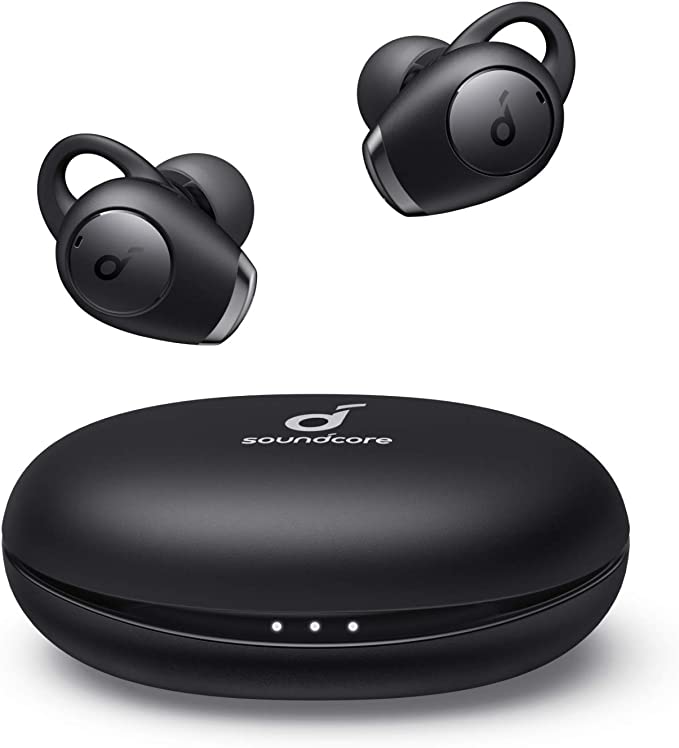CCA PLA13 : Exploring Affordable Planar Magnetic IEM Technology
Update on April 13, 2025, 7:19 a.m.
There’s a certain mystique surrounding planar magnetic headphone technology. For a long time, it resided primarily in the upper echelons of personal audio – large, often expensive headphones lauded by audiophiles for their detailed, responsive, and remarkably clear sound. Owning a pair felt like possessing a piece of finely tuned acoustic machinery. The barrier to entry, however, was often significant, placing this fascinating technology just out of reach for many music lovers.
But times change, and technology, thankfully, has a habit of becoming more democratic. We’re now witnessing an exciting trend: the core principles of planar magnetic drivers are being cleverly miniaturized and integrated into the much smaller form factor of in-ear monitors (IEMs). What was once exclusive is becoming accessible. Leading this charge into more budget-friendly territory are products like the CCA PLA13, an IEM that aims to deliver a taste of that planar magnetic magic without demanding a premium investment. This development opens up a new world of sonic possibilities for curious listeners, but as we’ll explore, the journey from high-end concept to affordable reality isn’t always straightforward.
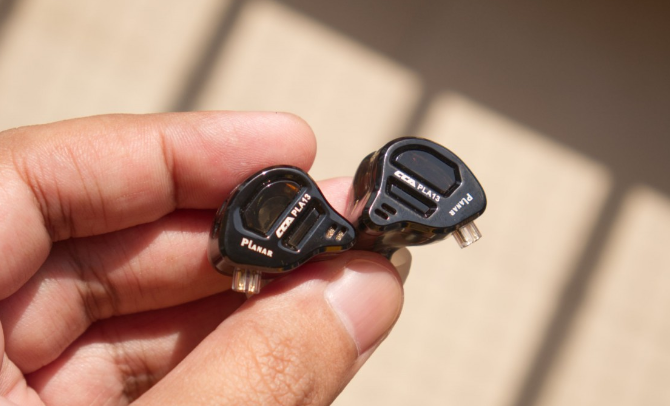
Decoding the Magic: What Makes Planar Magnetic Drivers Special?
Before we dive into the specifics of the PLA13, let’s take a moment to understand what makes planar magnetic technology distinct. Most earphones you encounter rely on dynamic drivers. Picture a miniature loudspeaker: a voice coil (a coil of wire) is attached to a cone- or dome-shaped diaphragm. This assembly sits within a magnetic field. When the audio signal (electrical current) flows through the coil, it moves back and forth, pushing the diaphragm like a piston, which in turn moves air to create the sound waves we hear. It’s a tried-and-true technology, capable of great performance.
Planar magnetic drivers, however, operate quite differently. Imagine, instead of a piston, a large, incredibly thin, flat sheet – almost like a tiny, high-tech sail. This is the diaphragm (the “planar” part). Etched onto or embedded within this diaphragm is a pattern of thin electrical conductors, like intricate pathways. This entire sheet is then suspended between arrays of carefully placed magnets (the “magnetic” part). When the audio signal flows through the conductors, the entire surface of the diaphragm interacts with the magnetic field and vibrates.
Think of the difference: a dynamic driver pushes primarily from the center point where the coil attaches, while a planar magnetic driver aims to move the entire surface of its diaphragm back and forth uniformly. This fundamental difference in operation leads to several theoretical advantages, which explain why audiophiles often gravitate towards this technology:
- Speed and Precision (Transient Response): Because the driving force is spread across the whole diaphragm, it can potentially react much faster and more accurately to changes in the audio signal. This translates to excellent transient response. Think about the sharp initial “hit” of a snare drum, the crisp pluck of a guitar string, or the rapid decay of a cymbal crash. Planar drivers often excel at rendering these details with startling clarity and realism, making music sound more immediate and less “smeared.” (General Physics Concept: A lighter object with force applied evenly across its surface can accelerate and decelerate faster than a heavier object pushed from a single point).
- Lower Distortion: The uniform movement of the planar diaphragm aims to minimize the unwanted flexing, bending, or “break-up” modes that can occur in cone diaphragms, especially at higher volumes or complex frequencies. This theoretically results in lower harmonic distortion, meaning the sound reproduced is cleaner and more faithful to the original recording. You hear more of the music and less of the driver struggling to keep up.
- Consistency and Cohesion: By moving as a single, coherent unit, the planar diaphragm strives to launch sound waves more consistently across its entire surface. This can contribute to a more stable stereo image (the sense of where instruments are placed in space) and potentially greater detail retrieval, as different parts of the diaphragm aren’t interfering with each other as much.
It’s this combination of potential speed, clarity, and low distortion that forms the core appeal of planar magnetic sound. The challenge, historically, has been shrinking this intricate driver assembly down to fit comfortably and perform effectively within the tiny confines of an IEM.
Enter the CCA PLA13: A Budget Contender in the Planar Arena
The CCA PLA13 emerges as a direct result of engineers tackling that miniaturization challenge. It represents an effort by CCA, a brand often associated with offering high-feature audio gear at competitive prices, to bring the planar magnetic experience to a wider audience. Let’s break down its construction based on the available information:
The Heart: The 13.2mm Planar Driver
At the core of the PLA13 lies its namesake: a 13.2mm planar magnetic driver. In the world of IEMs, 13.2mm is a relatively substantial driver size. Generally, larger diaphragms have the potential to move more air, which can be beneficial for reproducing lower frequencies (bass) and handling wider dynamic swings in music. CCA describes this driver as “newly-developed” and “patented,” featuring a “dual-cavity” design and “double-sided array magnets.”
While the provided information doesn’t elaborate on the specific technical details of the “patent” or “dual-cavity” structure, we can infer the general intent. A “dual-cavity” design might refer to acoustically separating the space in front of and behind the driver, potentially allowing for better control over resonances and airflow, which is crucial for tuning the sound signature within a small enclosure. (General Acoustics Concept). “Double-sided array magnets” (magnets on both sides of the diaphragm) typically aim to create a stronger, more uniform magnetic field for the diaphragm to move within. This enhanced control theoretically contributes to lower distortion and better diaphragm control compared to simpler single-sided magnet designs.
The Body: Resin Shells & Aluminum Plates
The driver is housed within ear shells crafted from skin-friendly resin. Resin is a popular material for IEM shells due to several advantages: it can be precisely molded into complex, ergonomic shapes to fit the contours of the human ear, potentially improving comfort and passive noise isolation. It’s also relatively lightweight and offers good acoustic damping properties. The PLA13 aims for an ergonomic shape and lightweight form factor, targeting a comfortable and secure fit for extended listening.
Complementing the resin body are aluminum alloy faceplates. This adds a touch of visual flair and potentially some structural rigidity. The combination of translucent resin (often allowing a glimpse of the internal components) and metal faceplates is a common aesthetic choice in modern IEM design, balancing visual appeal with functional considerations.
The Lifeline: Detachable Silver-Plated Cable
Connectivity is handled via a detachable cable system using the common 0.75mm 2-pin connector standard. This is a significant plus, offering users the flexibility to easily replace the cable if it gets damaged, or to experiment with aftermarket cables that might offer different handling characteristics or (more debatedly) subtle sonic alterations.
The stock cable supplied with the PLA13 is described as high-purity and silver-plated, terminating in a standard 3.5mm plug for wide compatibility with phones, laptops, and portable players. Silver has slightly higher electrical conductivity than copper. (General Physics Fact). The claim made for silver-plated cables is that this enhanced conductivity can potentially improve the transmission of high-frequency details and reduce signal loss. However, the audible difference between well-made copper and silver-plated cables is often subtle and a subject of ongoing debate within the audiophile community. Psychoacoustics and system synergy can play significant roles. Regardless, the inclusion of a detachable, seemingly well-constructed cable is a practical advantage at this price point. The product is also noted as being available with or without an in-line microphone, catering to different user needs.
The Sound Signature Enigma: Bridging Claims and Contradictions
This is where the story of the CCA PLA13 takes a fascinating, albeit complex, turn. Based on the planar magnetic technology inside and the design choices, one might anticipate a sound profile characterized by clarity, speed, and potentially well-controlled bass. Indeed, CCA’s own promotional material claims the PLA13 delivers an “excellent sound presentation with ultimate clarity, detailed treble region, and a punchy lower end,” further stating it’s professionally tuned for a “balanced sound” with a “spacious soundstage” and “clean and accurate response” across all frequencies.
However, the user experiences documented in the provided source material paint a dramatically different and highly polarized picture. The average customer rating sits at 3.7 out of 5 stars (based on the initial 10 global ratings), which strongly suggests a product that evokes very different reactions from different listeners.
On one hand, some users seem genuinely impressed, echoing some of the anticipated planar benefits. Positive feedback highlights a “fun” sound, “hard-hitting but not bloated” bass, “great separation of space,” nice mids, good treble, and excellent comfort. Some reviewers explicitly stated they enjoyed various music genres and found the PLA13 offered great value, even comparing it favorably to more expensive gear. These comments suggest that, for at least some users, the PLA13 delivered on its promise of engaging, detailed sound at an accessible price.
On the other hand, a significant portion of the feedback directly contradicts these positive assessments, particularly regarding the crucial bass region. Several users reported a distinct lack of low-end (“no low end at all,” “bass was lacking a lot”), describing the sound as thin or skewed heavily towards midrange and “underwhelming” highs. One user, based on their listening experience, even questioned if the drivers were truly planar magnetic, feeling the sound quality was substantially lower than the price suggested (“sound about 30 dollars cheaper,” “don’t pay more than twenty dollars”). Concerns about build quality or longevity also surfaced, with one report of a right earbud failing quickly, and another mentioning rattling at high volumes.
Exploring the “Why”: Unpacking the Discrepancy
Why such starkly different experiences? While we can’t know for certain without independent testing and wider data, we can explore several plausible contributing factors based on common issues in audio gear:
- Quality Control Variance: Manufacturing inconsistencies are a potential issue, especially with complex technologies being produced at budget price points. It’s conceivable that different units of the PLA13 might exhibit noticeable variations in driver performance or assembly quality, leading to different sonic outcomes. One user might receive a unit performing close to the design intent, while another receives one with issues.
- Individual Hearing and Preferences: Human hearing varies significantly. What one person perceives as “balanced,” another might find lacking in bass or too bright. Furthermore, listener preferences play a huge role – some desire powerful, impactful bass, while others prioritize midrange clarity or treble sparkle. A sound signature that delights one user might disappoint another seeking a different kind of presentation.
- The Crucial Role of Eartip Seal: With any IEM, achieving a proper airtight seal between the eartip and the ear canal is absolutely critical, especially for bass reproduction. (General IEM Knowledge). An incomplete seal causes low frequencies to leak out, resulting in a thin, tinny sound. It’s possible that some users reporting a lack of bass simply hadn’t achieved an optimal fit with the included eartips (or didn’t experiment with alternatives). Different ear shapes require different tip sizes and styles.
- Source Power and Synergy: Planar magnetic drivers, even miniaturized ones, can sometimes be more demanding in terms of amplification current compared to typical dynamic drivers. (General Headphone Knowledge). While the PLA13’s specific impedance and sensitivity figures aren’t provided in the source text, it’s possible that users driving them directly from low-power sources (like some smartphone headphone jacks) might not be providing enough power for the drivers to perform optimally, potentially affecting bass impact and overall dynamics. A user connecting them to a dedicated amplifier might have a very different experience.
- Expectation Mismatch: The term “planar magnetic sound” itself might create certain expectations (perhaps based on experiences with high-end headphones) that a budget implementation might not fully meet. Listeners expecting thunderous sub-bass might be disappointed if the tuning prioritizes speed and clarity in the bass region instead of sheer quantity.
Understanding these potential factors is key to interpreting the mixed feedback surrounding the PLA13. It’s less likely a simple case of the product being universally “good” or “bad,” and more likely a complex interplay of manufacturing consistency, individual physiology, usage habits, and subjective taste.
Finding Your Fit: Who Might Vibe with the PLA13 (and Who Might Not)?
So, who should consider the CCA PLA13? Given its affordable entry price into the planar magnetic world and the positive experiences reported by some users, it could appeal to:
- The Tech-Curious Explorer: Individuals fascinated by different audio driver technologies who want to experience the potential characteristics of planar sound (speed, clarity) without a significant financial outlay.
- The Budget-Conscious Upgrader: Listeners moving up from very basic earbuds who are looking for a potentially more detailed sound and are willing to accept some variability.
- The Experimenter: Users who enjoy trying different gear, perhaps using equalization (EQ) to tailor the sound to their liking, or pairing them with different sources and eartips to find the best combination.
However, potential buyers absolutely need to weigh this against the significant caveats raised by the negative feedback:
- The Sound Signature Gamble: The stark disagreement on the fundamental sound profile, especially bass quantity, means you might not get the sound you expect.
- Potential Quality Control Concerns: Reports of unit failure or inconsistencies warrant caution.
- Possible Need for Adequate Power: Depending on your source device, you might need a dedicated amplifier or dongle DAC/amp to get the best performance.
- Fit is Paramount: You must be prepared to experiment with eartips to ensure a proper seal, crucial for bass response.
If you prioritize a guaranteed bass-heavy signature, absolute consistency out of the box, or proven long-term reliability, the PLA13, based on the available initial user feedback, might be a risky proposition.
Conclusion: An Affordable Planar Portal with a Question Mark
The CCA PLA13 undeniably represents an intriguing proposition: the sophisticated allure of planar magnetic driver technology packaged into an accessible IEM format. Its design incorporates promising elements – a large planar driver, ergonomic resin shells, and the practicality of a detachable cable. The potential for the characteristic planar speed, clarity, and low distortion at this price point is compelling.
However, the journey from theoretical potential to consistent real-world performance appears, based on early user accounts, to be marked by uncertainty. The starkly contrasting feedback, particularly regarding the fundamental aspect of bass response, hangs a significant question mark over the PLA13’s sound signature. While some users find them to be an engaging and high-value entry into planar sound, others report experiences falling far short of expectations, potentially due to factors ranging from quality control to individual listening setup and preferences.
Ultimately, the CCA PLA13 stands as a fascinating, if potentially flawed, ambassador for budget planar magnetic IEMs. It offers a low-cost ticket to explore this advanced technology, but prospective buyers should approach with eyes wide open, aware of the reported inconsistencies and the importance of factors like proper fit and potentially adequate source power. It’s an invitation to experiment, perhaps, but one that comes without a guarantee of sonic satisfaction for every listener. Making an informed decision requires acknowledging both the exciting technological promise and the documented variability of the user experience.
[//]:(version:20250412 001)





